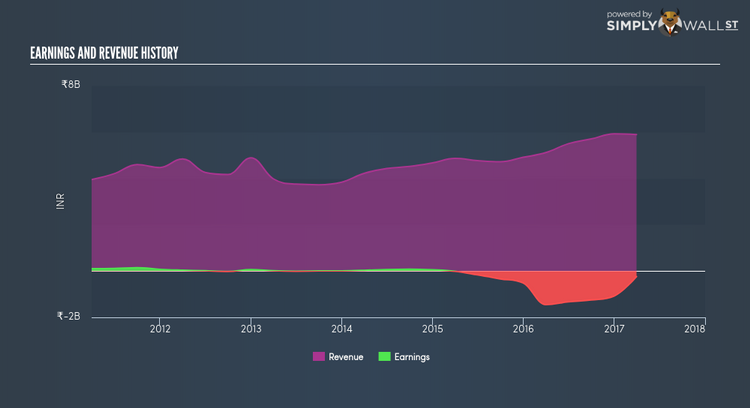How Does Accel Frontline Limited (NSE:AFL) Affect Your Portfolio Returns?

If you are looking to invest in Accel Frontline Limited’s (NSEI:AFL), or currently own the stock, then you need to understand its beta in order to understand how it can affect the risk of your portfolio. AFL is exposed to market-wide risk, which arises from investing in the stock market. This risk reflects changes in economic and political factors that affects all stocks, and is measured by its beta. Not every stock is exposed to the same level of market risk, and the broad market index represents a beta value of one. A stock with a beta greater than one is expected to exhibit higher volatility resulting from market-wide shocks compared to one with a beta below one.
View our latest analysis for Accel Frontline
What does AFL’s beta value mean?
With a beta of 1.13, Accel Frontline is a stock that tends to experience more gains than the market during a growth phase and also a bigger reduction in value compared to the market during a broad downturn. Based on this beta value, AFL will help diversify your portfolio, if it currently comprises of low-beta stocks. This will be beneficial for portfolio returns, in particular, when current market sentiment is positive.
Could AFL’s size and industry cause it to be more volatile?
AFL, with its market capitalisation of ₹1.61B, is a small-cap stock, which generally have higher beta than similar companies of larger size. In addition to size, AFL also operates in the it industry, which has commonly demonstrated strong reactions to market-wide shocks. As a result, we should expect higher beta for small-cap stocks in a cyclical industry compared to larger stocks in a defensive industry. This supports our interpretation of AFL’s beta value discussed above. Next, we will examine the fundamental factors which can cause cyclicality in the stock.
Is AFL’s cost structure indicative of a high beta?
An asset-heavy company tends to have a higher beta because the risk associated with running fixed assets during a downturn is highly expensive. I test AFL’s ratio of fixed assets to total assets in order to determine how high the risk is associated with this type of constraint. Considering fixed assets account for less than a third of the company’s overall assets, AFL seems to have a smaller dependency on fixed costs to generate revenue. As a result, the company may be less volatile relative to broad market movements, compared to a company of similar size but higher proportion of fixed assets. However, this is the opposite to what AFL’s actual beta value suggests, which is higher stock volatility relative to the market.
What this means for you:
You may reap the gains of AFL’s returns during times of economic growth by holding the stock. Its low fixed cost also implies that it has the flexibility to adjust its cost to preserve margins during times of a downturn. I recommend analysing the stock in terms of your current portfolio composition before deciding to invest more into AFL. What I have not mentioned in my article here are important company-specific fundamentals such as Accel Frontline’s financial health and performance track record. I urge you to complete your research by taking a look at the following:
Financial Health: Is AFL’s operations financially sustainable? Balance sheets can be hard to analyze, which is why we’ve done it for you. Check out our financial health checks here.
Past Track Record: Has AFL been consistently performing well irrespective of the ups and downs in the market? Go into more detail in the past performance analysis and take a look at the free visual representations of AFL’s historicals for more clarity.
Other High-Performing Stocks: Are there other stocks that provide better prospects with proven track records? Explore our free list of these great stocks here.
To help readers see pass the short term volatility of the financial market, we aim to bring you a long-term focused research analysis purely driven by fundamental data. Note that our analysis does not factor in the latest price sensitive company announcements.
The author is an independent contributor and at the time of publication had no position in the stocks mentioned.

